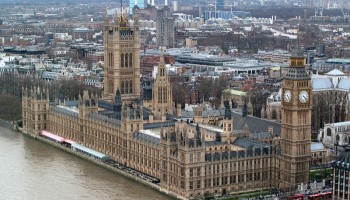Government Website Strategy Takes A Pasting

The National Audit Office says the government has not measured the benefits of its web strategy
The National Audit Office (NAO) has criticised the government for failing to put in place any method for measuring the benefits of its online portals Business.gov, Directgov and the Government Gateway, on which it has spent nearly £500m so far.
The government is also unable to measure the benefits of its efforts to consolidate public sector websites, which have cost the taxpayer up to £300,000, the NAO said in the Digital Britain One report published last week.
Measurable benefits
 The report praised the government’s portal efforts for attracting large numbers of users, but said this benefit must be measurable.
The report praised the government’s portal efforts for attracting large numbers of users, but said this benefit must be measurable.
“It is a good thing that people visited the two main government websites some 200 million times last year,” said the NAO’s Comptroller and Auditor General, Amyas Morse, in a statement. “However, it’s still unclear what benefits have been achieved and at what cost. We cannot conclude, therefore, that the taxpayer is securing value for money.”
The consolidation effort was launched under the previous Labour government and was intended to concentrate government services into centralised sites and thus allow some of the public sector’s more than 250,000 websites to be shut down.
The NAO estimated that the government has spent an average of £90.3m per year on the three portals, while the rationalisation efforts have cost between £265,000 and £300,000.
“We… estimate the lifetime cost of these services since launch has been £479m, although the costs of Gateway from 2002-03 to 2004-05 were not available,” the NAO said in its report. “The government, however, has not generally measured the benefits of this spend, and therefore does not know whether it has under- or over-invested in these services.”
Cuts
The government has shut down 1,526 websites since 2006, but it remains a mystery whether this figure is on target, since the exact number of government sites in existence is in doubt and the government has made changes to its own targets for site closures, the NAO said.
And while the portals share some common infrastructure, the overlap is not complete, leading to cost inefficiencies, the report said.
“For example, Directgov and Business.gov each have their own supporting software, which means that some stakeholders are required to have staff trained in the use of both systems,” the NAO said in the report.
The NAO said the new Government Digital Service (GDS) should roll out methods for measuring the costs and benefits of its digital services, and should also address digital skills gaps within government.
Alphagov
In May the government unveiled a prototype of the Alphagov website, its first attempt to consolidate the hundreds of public sector services and online resources under one roof.
Alphagov has been developed at a cost of £261,000 by the Cabinet Office, in line with the recommendations of a review by the government’s digital champion, Martha Lane Fox. The website offers an example of what a single UK government website could look like, but is not permanent and is not intended to replace any other government sites.
Alpha.gov.uk is intended to eventually replace the government’s unpopular Directgov portal.